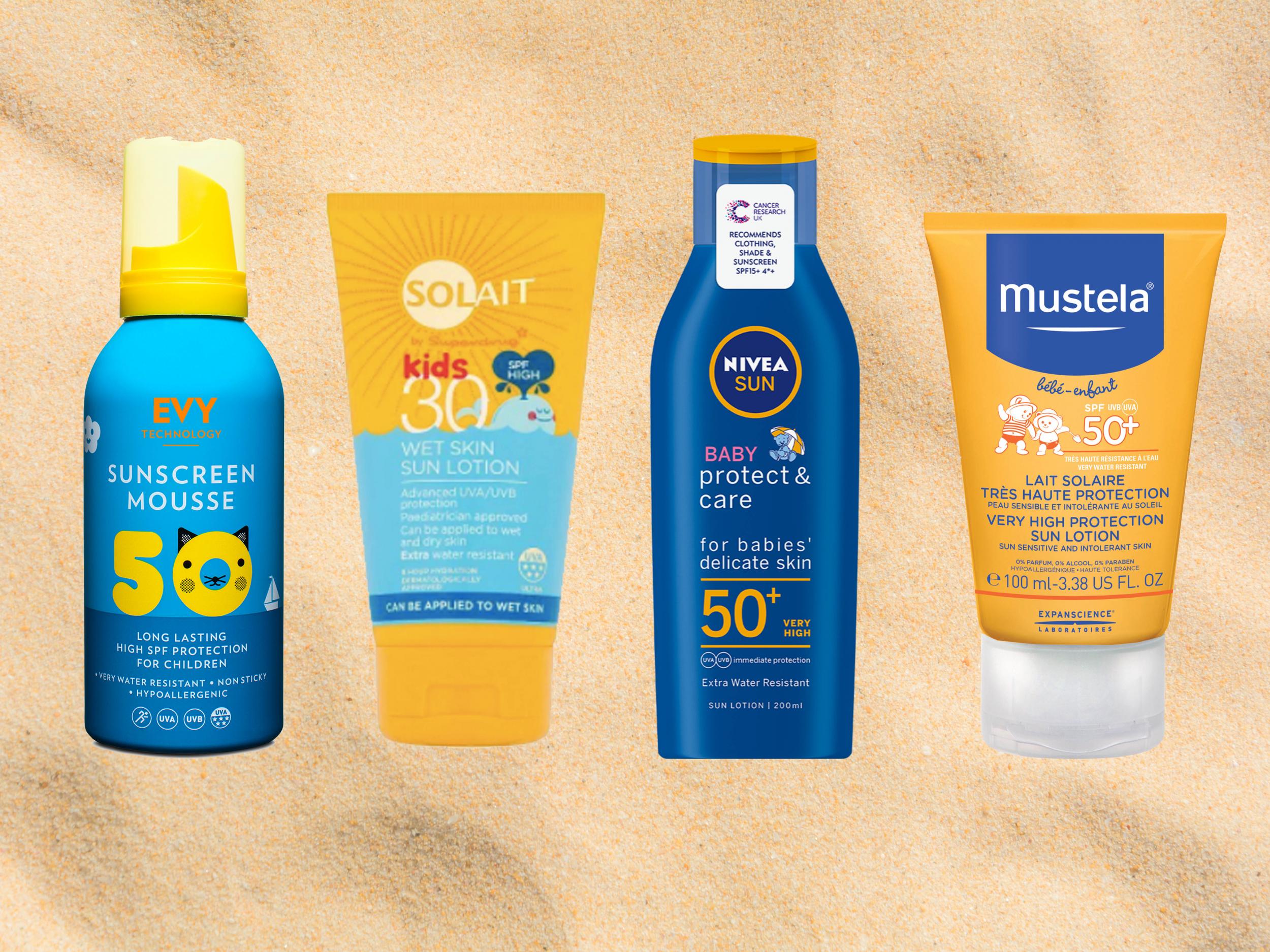
The sun’s rays still break through cloud cover and can even be enhanced by it. It’s important to note that sunscreen isn’t only for the summer months.
#BABY SUNSCREEN SKIN#
According to the American Academy of Dermatology Association, skin damage can start to show as early as 4 years old and may eventually lead to premature aging and skin cancer. Aside from getting a nasty and painful sunburn, the harmful ultraviolet A and B (UVA and UVB) rays emitted by the sun can lead to long-term skin damage. This is because they’re more susceptible to the potential side effects of sunscreen, like rashes and chemical absorption, than adults. Instead, the Skin Cancer Foundation recommends keeping infants out of the sun with umbrellas and protective clothing. Whether you’re headed to the beach or taking a walk around the block, protection from the sun is important for everyone - and that includes your baby! But your little one has sensitive skin, so picking a sunscreen isn’t always as easy as it is for older children or adults.īefore we move forward, it’s important to note that the Food and Drug Administration (FDA) advises against using sunscreen on children younger than 6 months. Best for parents and babies: Hello Bello SPF 50 Mineral Sunscreen.Best for activities: Badger Kids Mineral Sunscreen Cream.Best eco-friendly formula: Thinkbaby SPF50+ Sunscreen.Best fragrance-free formula: Babyganics SPF50+ Sunscreen Lotion.Best affordable buy: Alba Botanica Tropical Fruit Kids Sunscreen.

Best for eczema: Aveeno Baby Continuous Protection Sensitive Skin Zinc Oxide Sunscreen.Best spray: Babo Botanicals Sheer Zinc Sunscreen.
#BABY SUNSCREEN FREE#
Best hypoallergenic stick formula: Neutrogena Pure & Free Baby Sunscreen.Best overall baby sunscreen: Aveeno Baby Continuous Protection Sensitive Skin Sunscreen Stick.Colorescience offers PABA-free safe sunblock* for babies to protect their skin without causing irritation.Ĭolorescience offers the safest sunscreen for babies over six months old, rich with natural physical sunscreen ingredients that protect your baby’s skin for the sun while also nourishing it.A quick look at the best sunscreens for babies It can also darken skin pigmentation and contribute to skin cancer. Exposure to PABA can result in redness, swelling, inflammation, and itching. PABA is another popular chemical that blocks UV light irritates skin. Symptoms of a toxic reaction include changes in vision, bone pain, and skin damage. It can also cause acute toxicity if vitamin A is over-applied or consumed. This chemical is a synthetic form of vitamin A, and can potentially form lesions when applied to skin in the sun. Oxybenzone is a toxic ingredient that’s been linked to hormone disruption, early onset puberty in girls, and even skin cancer.

Oxybenzone is a common chemical filter that absorbs UV light before it reaches the skin, and can also seep into the body and remain there for an unknown period of time.

But many sunscreens on the market use harmful chemical ingredients that can irritate skin and may cause other negative side effects, including: Protecting your baby’s skin from UV light is especially important to prevent skin cancer and other dangerous heat-related illness. Your baby’s skin is extra sensitive to just about every outside element as they’re being introduced to new things every day.


 0 kommentar(er)
0 kommentar(er)
